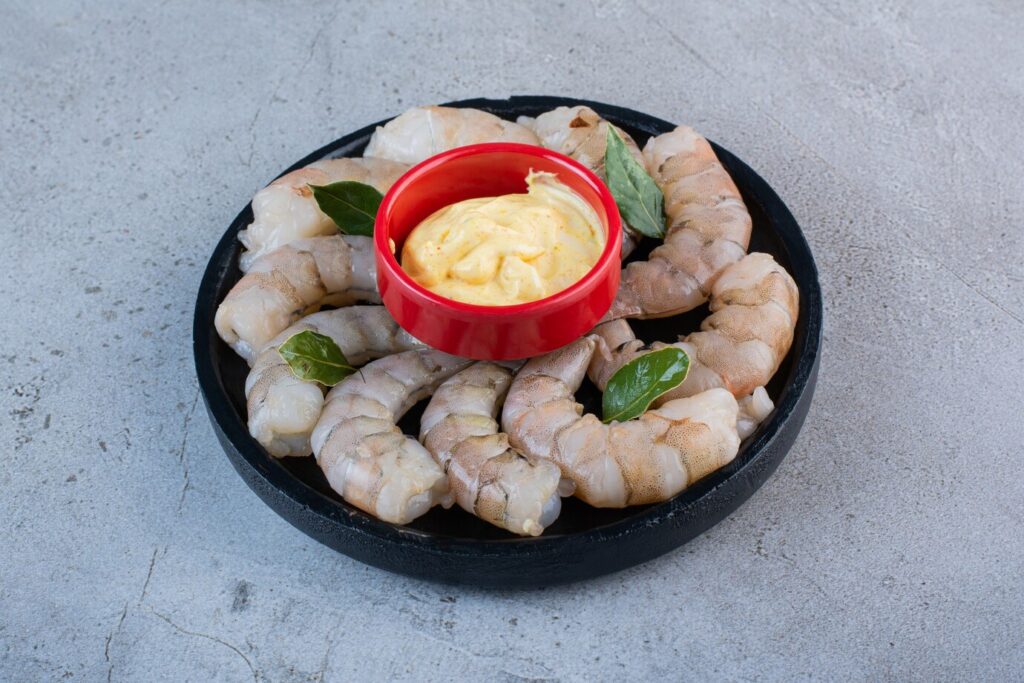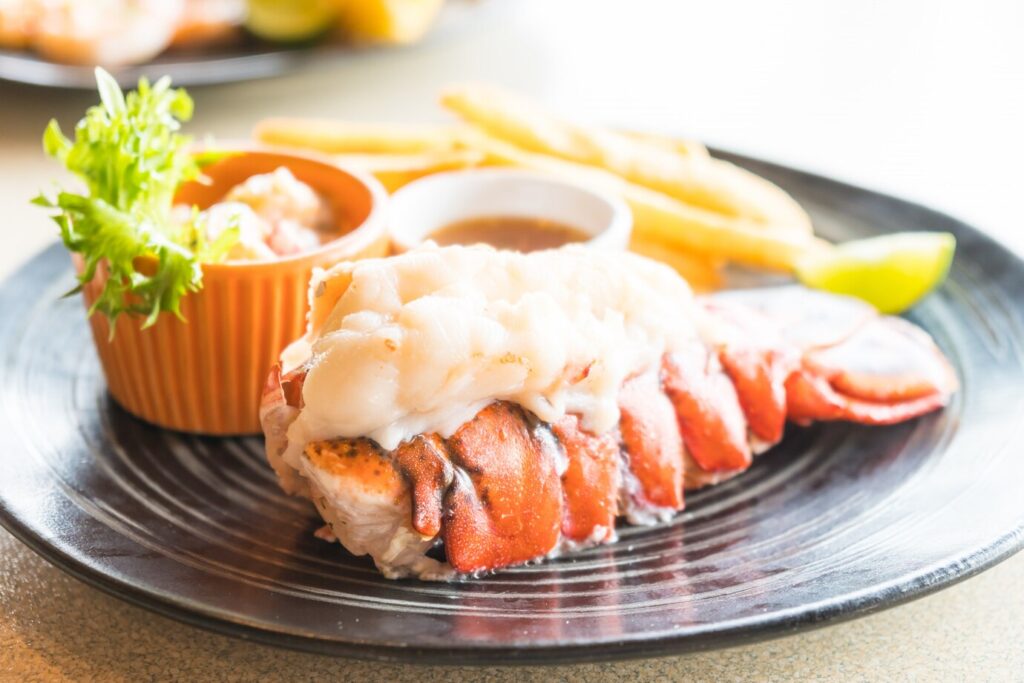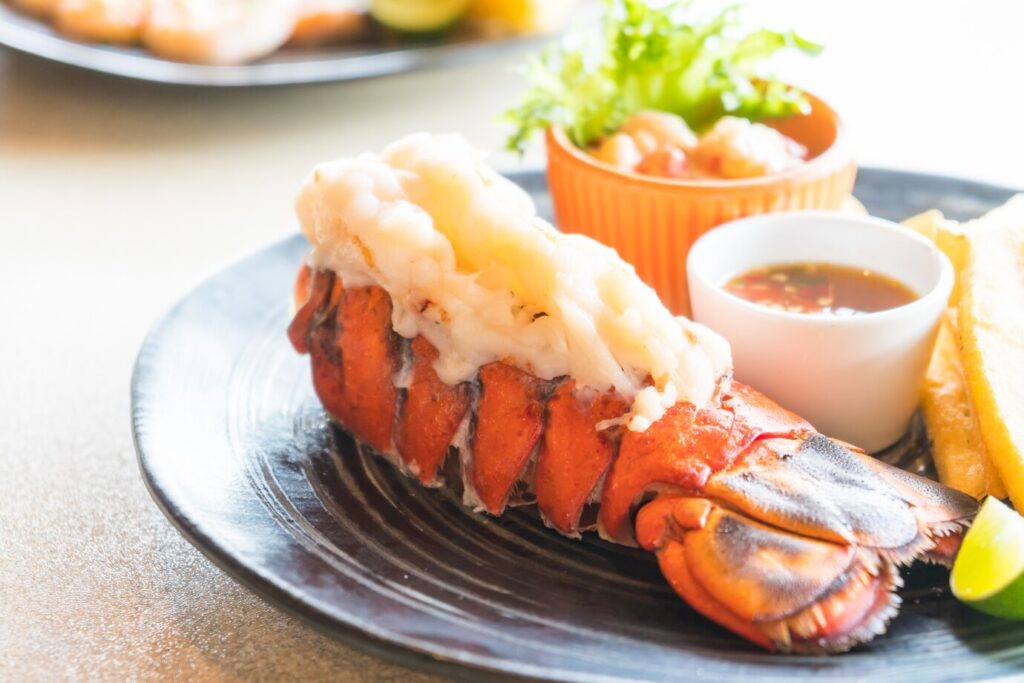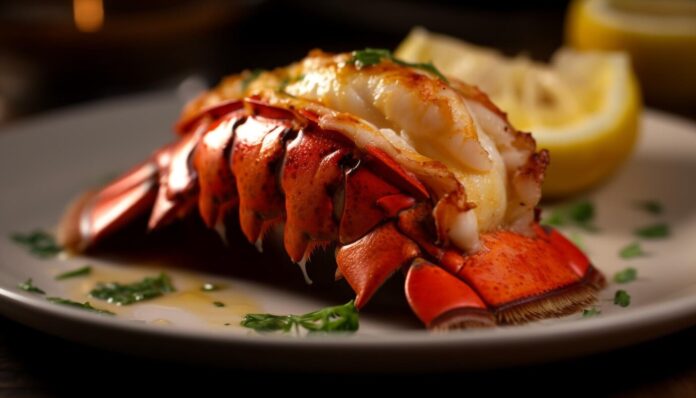Cooking lobster at home might seem like a challenge, but with the right steps, it becomes a simple and rewarding process. Whether you’re preparing a special dinner or just want to enjoy quality seafood, knowing how to cook frozen lobster tails properly ensures a tender, flavorful result every time. The key lies in proper thawing, preparation, and choosing the right cooking method.
How to Cook Frozen Lobster Tails: A Guide

Frozen lobster tails are widely available and let you enjoy seafood anytime without worrying about seasonality. They are usually flash-frozen soon after being caught, which helps retain freshness. However, choosing high-quality lobster tails makes a difference in taste and texture.
- Cold-water lobster tails (typically from the North Atlantic) have firmer, sweeter meat and are considered the best quality.
- Warm-water lobster tails (often from the Caribbean) have a softer texture and a slightly different flavor profile.
For the best experience, opt for cold-water lobster tails. Look for clear, slightly gray shells with no discoloration or strong odors.
Thawing Frozen Lobster Tails Correctly

Proper thawing ensures even cooking and prevents toughness. There are two recommended methods to safely thaw lobster tails.
Refrigerator Thawing (Best Method)
- Place frozen lobster tails on a plate or in a bowl and keep them in the fridge overnight (8-12 hours).
- Keep the packaging intact or cover them with plastic wrap to prevent contamination.
- Before cooking, pat them dry with a paper towel.
This method is ideal because it allows the lobster tails to retain their natural moisture.
Cold Water Thawing (Faster Alternative)
- Seal the lobster tails in a leak-proof plastic bag.
- Submerge the bag in a bowl of cold water.
- Change the water every 30 minutes to maintain a steady temperature.
- The tails should thaw in 1-2 hours, depending on size.
Avoid using hot or warm water, as this can partially cook the meat and ruin its texture.
Preparing Lobster Tails for Cooking

Once thawed, preparing the lobster tails properly makes a difference in texture and presentation. The best method is butterflying, which allows heat to distribute evenly while giving a restaurant-quality look.
How to Butterfly Lobster Tails
- Place the thawed lobster tail shell-side up on a cutting board.
- Use sharp kitchen shears to cut through the top shell, stopping just before the tail fin.
- Gently spread the shell apart and lift the meat, keeping it attached at the base.
- Lay the meat over the shell to expose it, ensuring even cooking and better seasoning absorption.
After butterflying, brush the meat with melted butter, garlic, lemon juice, and a pinch of paprika for extra flavor.
Best Ways to Cook Frozen Lobster Tails
There are several ways to cook frozen lobster tails, depending on your preferred texture and flavor.
1. Broiling (Best for Rich Flavor and Presentation)
Broiling gives the lobster a golden-brown top with a rich, buttery taste.
- Preheat the oven’s broiler and place the oven rack 6 inches from the heat source.
- Arrange the butterflied lobster tails on a baking sheet.
- Brush the meat with melted butter, garlic, lemon juice, and paprika.
- Broil for 8-10 minutes, or until the meat is opaque and slightly browned.
- Check doneness with a thermometer—140°F (60°C) is the target temperature.
This method enhances the natural sweetness of the lobster while adding a slight crisp to the top.
2. Baking (For a Moist, Juicy Texture)
Baking is a great option for those who prefer softer, evenly cooked lobster.
- Preheat the oven to 375°F (190°C).
- Place the lobster tails in a baking dish and brush them with butter and seasonings.
- Bake for 12-15 minutes, depending on size.
- The meat should turn opaque when done.
Baking helps retain moisture and keeps the meat tender.
3. Steaming (Best for Soft and Juicy Lobster)
Steaming locks in moisture and prevents overcooking.
- Fill a large pot with 2 inches of water and bring it to a boil.
- Place the lobster tails in a steamer basket above the water.
- Cover and steam for 6-8 minutes, depending on size.
- The lobster is ready when the meat is opaque and white.
This method is simple and ensures the meat stays delicate and juicy.
4. Grilling (For a Smoky, Charred Taste)
Grilling adds a subtle smokiness and enhances the natural lobster flavor.
- Preheat the grill to medium-high heat (400°F or 200°C).
- Brush the lobster tails with butter and seasonings.
- Place them shell-side down on the grill for 5-6 minutes.
- Flip and cook for another 2-3 minutes, basting with extra butter.
Grilled lobster pairs well with garlic butter or herb sauce.
5. Boiling (Quick and Easy Cooking Method)
Boiling is the fastest way to cook lobster tails, but it doesn’t enhance flavor as much as other methods.
- Boil a large pot of salted water.
- Drop in the lobster tails and cook for 4-6 minutes, depending on size.
- The shells will turn bright red, and the meat will be opaque when done.
- Drain and serve immediately.
Boiling is a good option if you plan to use the lobster meat in salads, pasta, or rolls.
Serving Suggestions and Pairings
Pairing lobster tails with the right sides and sauces elevates the meal.
Top Sauces for Lobster Tails
- Garlic Butter Sauce – A simple mix of melted butter, garlic, and lemon.
- Lemon Herb Butter – Butter infused with fresh herbs like dill and parsley.
- Spicy Cajun Butter – A bold mix of butter and Cajun seasoning.
Best Side Dishes
- Garlic Mashed Potatoes – Creamy potatoes complement lobster’s delicate taste.
- Grilled Asparagus – Adds crunch and a smoky flavor.
- Rice Pilaf – A light, flavorful base for lobster dishes.
- Butter-Glazed Carrots – A touch of sweetness to balance the richness.
A glass of chilled Chardonnay or Sauvignon Blanc pairs well with lobster, enhancing its flavors.
Frequently Asked Questions (FAQs)
Q1. How do I know when lobster tails are fully cooked?
The meat should be completely opaque, and the internal temperature should reach 140°F (60°C). Overcooking makes it rubbery.
Q2. Can I cook lobster tails without thawing?
It’s possible, but not recommended. Cooking from frozen results in uneven texture. Thawing first ensures the best results.
Q3. What’s the best seasoning for lobster tails?
A mix of butter, garlic, lemon juice, paprika, and salt enhances flavor. You can also add Cajun seasoning for spice.
Q4. Why is my lobster tough?
Overcooking is the most common reason. Lobster meat is delicate and should be cooked just until opaque.
Q5. What is the best method for beginners learning how to cook frozen lobster tails?
For beginners learning how to cook frozen lobster tails, steaming or baking is the easiest way to achieve tender, juicy meat with minimal effort. Both methods ensure even cooking while preserving the lobster’s natural flavor.
Wrapping Up
Now that you know how to cook frozen lobster tails, you can confidently prepare them at home. Whether you prefer broiling, baking, grilling, or steaming, each method brings out unique textures and flavors. Pair them with the right sauces and sides, and you have a meal that feels like a fine dining experience.




